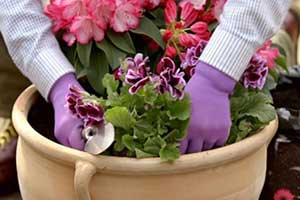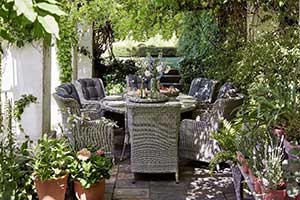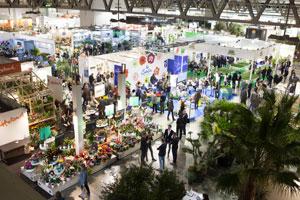The Gardenex export federation has been successful in securing cash grant funding for four major international garden trade exhibitions in the Government’s latest bidding round. The funding is available to eligible SMEs under the DIT’s Tradeshow Access programme and will enable British companies to exhibit their products to international markets in a cost-effective way, while also benefiting… Read more
How to keep your garden cool in the heat
With beautiful sunshine and high temperatures all over the UK, it’s no wonder that gardeners are making the most of spending time outside this summer. The dry weather does bring with it some cause for concerns, including news of a temporary hosepipe ban coming into effect in the North-West of England and one already in place in Northern Ireland.
As temperatures rise, the absence of rain means parched plants, browning lawns and a struggle for Britain’s wildlife to find food, shade and water to drink. Reservoir levels across England are being reported as lower than expected and water bodies including United Utilities and Scottish Water are cautioning residents to use water wisely.
Resident gardener and Senior Plant Buyer at Dobbies, Louise Golden, shares her advice on watering plants in the heat and gives top tips on conserving water and creating a space that’s wildlife friendly:
Plants 
- Focus your watering on newly planted garden plants. However, avoid watering in the peak of sunshine and instead give plants a much-needed drink in the evening, so that the plants have time to drink up the water before the heat of the following day.
- Where possible move potted plants into the shade for periods of the day, or for beds and borders in extremely hot weather, why not create some of your own shade using a beach umbrella or parasol.
- Add water retaining gel to the compost of patio pots when planting, which will reduce watering requirements. Aquagel sachets are ideal for baskets, pots and containers.
- Generally established border plants should have a good root system that is able to reach moisture deeper in the ground, so best to focus your attention on new or shallow rooting plants which will be under greater stress.
- Water in the evening so that the plants have time to drink up the water before the heat of the following day.
- Water directly at the base of plants, rather than over the top, to ensure the water gets to where it is needed. If a hosepipe ban comes into force we will only be able to use watering cans, or similar.
- You could stand container grown plants on saucers of water and if it gets excessively hot, move container plants into the shade.
- Water thoroughly less frequently, rather than a little and often. For border plants - water well and then apply a thick mulch of organic matter to help retain the moisture in the soil.
 Lawns
Lawns
- Established lawns that start to turn brown usually turn green again once rain return.
- Mow less frequently and raise the blade heights to reduce the stress on your lawn.
Flying the flag for feathered friends in the warm weather.
- Install a water feeding station for birds and other smaller wildlife to provide them with a drinking spot to keep them hydrated in the heat.
- Putting out food on bird tables is something most people associate with the winter months, but food shortages can occur at any time and RSPB advice on placing extra food as ‘extra food on your bird table can make a big difference to the survival of young.’ High protein foods are recommended.
- Lots of bird table designs feature roofs, meaning some extra shade whilst feeding.
- Birds require water to drink but also to bathe in to help keep them cool, so a bird bath is a great addition to your outdoor area.
To find your local Dobbies, browse the online range and for plenty more advice and inspiration please click here
- Log in to post comments


